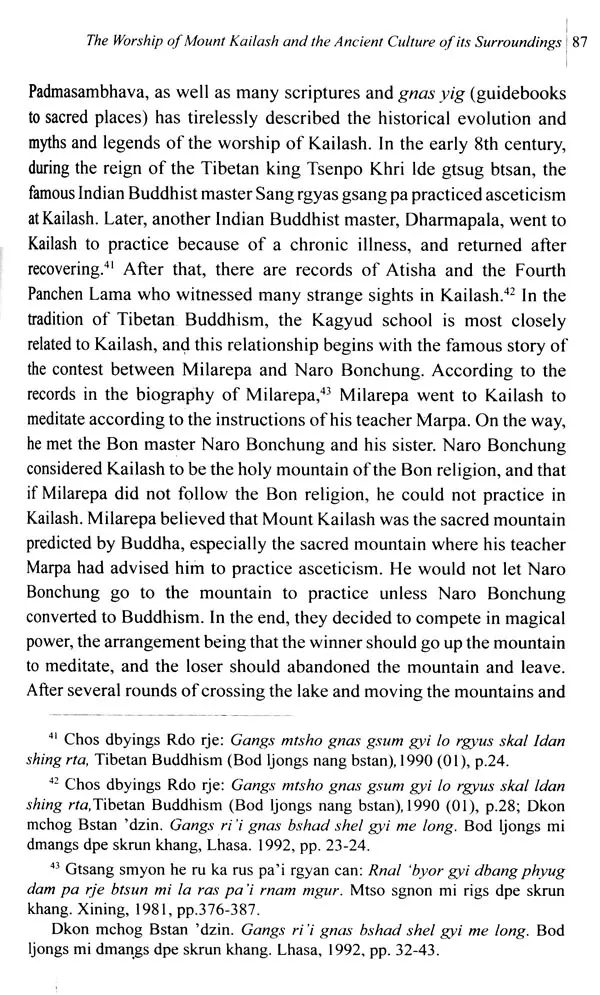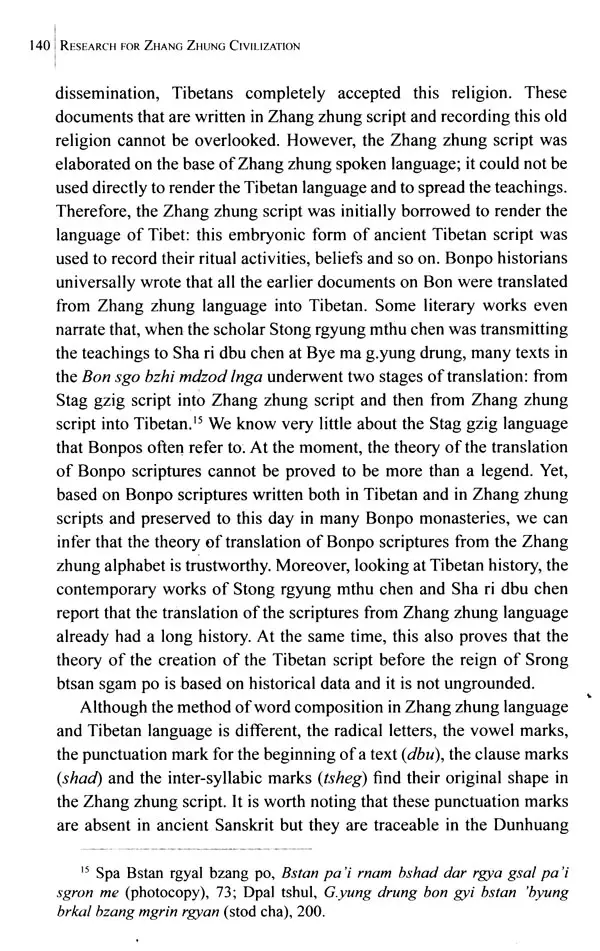
| Express Shipping: Guaranteed Dispatch in 24 hours |
|
| Item Code: | UAG869 |
| Publisher: | Vajra Books, Nepal |
| Author: | Tsering Thar |
| Language: | English |
| Edition: | 2021 |
| ISBN: | 9789937733250 |
| Pages: | 392 |
| Cover: | PAPERBACK |
| Other Details | 9.00 X 6.00 inch |
| Weight | 530 gm |
His recent works include Zhang zhung she’s rig skor gyi dpyad brjod bya ru'i gzi byin (2018), Bon bstan rig gnas skor gyi dpyad brjod khyung ru'i 'od snang (2018), and NANGSHIG A Tibetan Bonpo Monastery and its Family in Amdo (2016). He also edited the collections Gang ti se bon gzhung rig mdzod (25 volumes, 2010) and Gna' rabs bon gyi dpe dkon bris ma (10 volumes with Ngawang Gyamtso, 2018).
The present collection of sixteen articles has the merit of gathering between the covers of a single book several articles that have previously been published ,in English, but are not particularly easy to obtain, while also presenting, for the first time, English translations of works that I Nangshig: A Tibetan Bonpo Monastery and its Family in Amdo. , Kathmandu: Vajra Books, 2016.
until now have been available only in Tibetan or Chinese. As diverse as their respective topics may be, the articles all fall under a unifying umbrella of what we may broadly describe as the early civilization and indigenous culture of Tibet. Breaking this overarching theme down further, the articles may all be grouped under four overlapping categories: the religious and cultural history of early Tibet; the Bon religion; investigations of the Kailash area and its environs; and studies of Bon sacred sites and institutions in eastern Tibet, notably Kham and Amdo. The highly local character of many aspects of Tibetan civilization is such that it is impossible to assume that observations of religious practices made in one place are valid in another, even when both ostensibly belong to the same religion or religious school. The great value of the ethnographic accounts that make up the last of the four categories is therefore self-evident: while we much resign ourselves to the fact that the vast mosaic of Tibetan culture will always be partial and fragmented, these are valuable studies that help to fill in some of the blanks. Such fieldwork-based observations are all the more important because the author's familiarity with the relevant literary sources enables him to place them in a historical framework. As for the three other themes addressed in this collection, while the author does present a number of little-known and under-researched works mainly (though by no means only) from the Bon scriptural corpus, the emphasis here is not so much on the publication of new data as on the interpretation of source material that is often too fragmentary or ambiguous to be conclusive.
With -his encouragement and availability a number of students both Tibetan and Chinese were able to achieve higher degrees and were academically very successful.
The author's breadth of knowledge of history and religion of Tibet is displayed in these writings. They further show the depth of his experience in the fieldwork as well as his familiarity and foresight with the recent discovery of so many fairly old manuscripts that contain a variety of unknown rituals of the Bon tradition. They were kept mostly in private houses and temples in the villages. It was mainly under his supervision that these manuscripts were first photographed and then classified in accordance with the subject matter with notes and comments. One good example of this work is the ten volumes containing eighty-six texts entitled Ancient and Rare Tibetan Manuscripts of the Bon Tradition (gna' rabs bon gyi dpe dkon bris ma, misho sngon mi rigs dpe skrun khang, 2016).
In recent years the author also took the initiative to organize a series of international conferences to study what is termed as "Zhang zhung Culture" (Zhangzhung rig gans) in Lhasa and Beijing that has effectively opened up a new growing trend of studies in Tibetology. The author himself has devoted several articles on this theme. It must be mentioned here the one written in Tibetan, but extremely important. It is entitled Dengs rabs rgyal khabs phyi nang gi zhang zhung rig gnas kyi zhib 'jug (Mu khri btsan po, gYung drung bon dang 'brei ba 'i dpyad gleng /deb, 12, 2018, pp.51-76). This article contains a very candid discussion and evaluation of the research carried out on Zhang zhung by scholars.
Book's Contents and Sample Pages





















Send as free online greeting card
